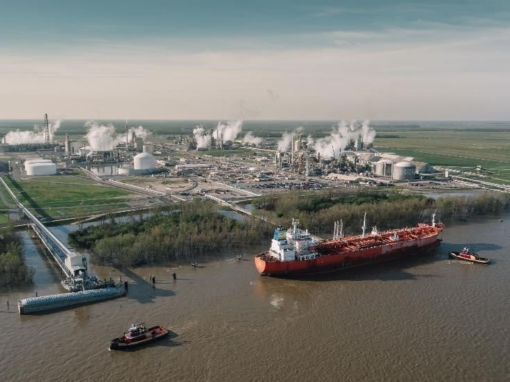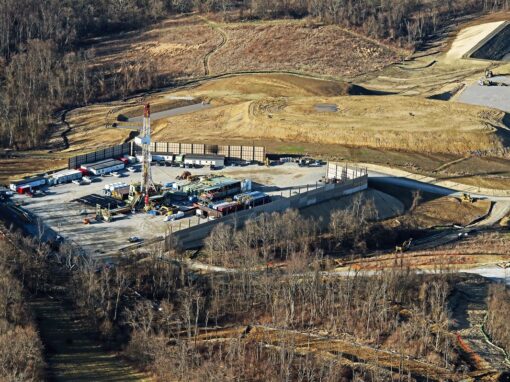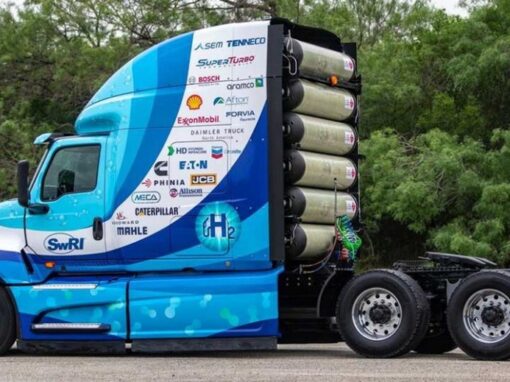By Aidan Dennehy, FCHEA
Germany has a longstanding reputation as a hotbed of innovation and world-class engineering, always on the cutting edge of technology. This is no different when it comes to the use of hydrogen. Germany is determined to accelerate the adoption of hydrogen, recognizing the many climate advantages of transitioning away from existing fossil fuel sources. From introducing some of the earliest fuel cell vehicles to developing a National Hydrogen Strategy, Germany has played a significant role in the hydrogen space.
State of hydrogen in Germany
Germany has emerged as a leader in the hydrogen space, excelling in areas such as research & development (R&D) and production capacity. Germany is home to various institutions, from both the public and private sector, which have played a pivotal role in developing hydrogen technology. 12% of global patents related to hydrogen energy production come from Germany, which is second only to the US.
In 2022, Germany produced about 2,200 kilotonnes of hydrogen (2.2 million metric tons), the most of any country in the EU and among the top ten globally. In comparison, the U.S produces 10 million metric tons annually. As in most countries, the majority of Germany’s hydrogen production occurs via steam-methane reforming. However, with climate goals in mind, Germany is committed to expanding its green hydrogen sector. Germany had the sixth greatest green hydrogen production capacity in 2023, with ambitious plans to generate almost 95 kilotonnes of electrolysis-based hydrogen (95,000 metric tons) annually. The U.S plans to generate 50 million metric tons of green hydrogen by 2050.
How is the government helping?
The German government is determined to accelerate the adoption of hydrogen energy. It has taken action to do so by creating a National Hydrogen Strategy, creating a friendlier regulatory environment, and subsidizing production.
Germany first released its National Hydrogen Strategy in 2020. The strategy outlines Germany’s goal of increasing the use of green hydrogen and how the government plans to do it. The strategy describes in detail how taking steps to subsidize hydrogen production, reform regulations, build out a transportation network, and cooperate with other countries will help Germany achieve its goal. The plan emphasizes the importance of importing hydrogen from abroad to meet future domestic demand, outlining a plan to do so. The most recent version of Germany’s National Hydrogen Strategy aims to have a domestic green hydrogen production capacity of 10 GW.
The German government recognizes regulatory reform is a crucial part of increasing the adoption of hydrogen. One important way they have done so is with the Hydrogen Acceleration Act. The law, approved in May of 2024, will fast track the construction of hydrogen import and production facilities by prioritizing it in the approval process. The act will shorten the permitting process for hydrogen projects and speed up legal cases when they are challenged in court.
The German government also offers various subsidy and funding schemes which benefit the hydrogen industry.
Subsidies
Public funding for hydrogen energy ramped up significantly after the National Hydrogen Strategy was published. In June of 2020, the government adopted an economic stimulus package called the “package for the future”, which allocated roughly €7 billion ($7.6 billion) for the purpose of speeding up the market rollout of hydrogen technology and another €2 billion ($2.2 billion) for fostering international hydrogen partnerships.
Most recently, Germany allocated €16 billion ($17.5 billion) in subsidies to convert natural gas-fired power plants to run on hydrogen. The government will provide capital and operating subsidies to gas plants while they transition to hydrogen, provided they do so by 2040 and adhere to certain conditions.
Germany also funds schemes which are not focused on hydrogen but which still benefit the industry. Companies looking to use low-carbon hydrogen can take advantage of Germany’s Carbon Contracts for Difference (CCFD) program. CCFD creates a competitive process where companies bid for subsidies to cover the cost of switching to a lower-carbon source of energy based on how much carbon-per-euro the transition would save. The first auction took place between March and June of 2024, distributing €4 billion ($4.4 billion) in subsidies over the next 15 years. The second auction will take place this fall and will make a further €19 billion ($20.7 billion) of subsidies available.
As a member of the EU, hydrogen producers in Germany are eligible for schemes offered by the organization. The most prominent EU scheme supporting hydrogen is the Important Project of Common European Interest (IPCEI) Hydrogen program. The scheme subsidizes the construction of hydrogen infrastructure which impacts energy markets in two or more EU countries, which, given the high level of grid interconnectivity between Germany and its neighbours, includes most potential projects. The aid is still provided by the German government, but the IPCEI hydrogen program grants it EU approval, required for all energy market subsidies, in an expedited manner. The most recent IPCEI grant in Germany occurred in July of 2024, when 23 German hydrogen projects received around €4.6 billion ($5 billion) in funding.
FCHEA member activity
Various FCHEA members either call Germany home or maintain an extensive footprint in the country. BMW Group is one of Germany’s most famous companies. Much of the design, testing, and production of BMW’s hydrogen fuel cell electric vehicles (FCEVs) takes place in Germany. For example, BMW’s Plant in Leipzig is currently piloting the use of hydrogen in vehicle production.

BMW iX5 Hydrogen (Source: BMW)
In 2029, the Energy Observer 2 is set to launch using a design of a multipurpose cargo ship fueled by liquid hydrogen. This technology will allow for zero-emission navigation while offering very high transport capacities and autonomy.

Energy Observer 2 (Source: Energy Observer)
The country’s capital city Berlin is home to FCHEA member Neumann & Esser. The company’s various compressors help deliver hydrogen in usable levels of energy density.



